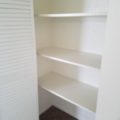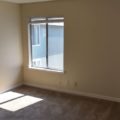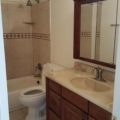They’re more affordable than you think, and the benefits make them a bright idea.
The decision to add solar panels to your home can seem daunting. The unknowns and assumptions of costs and installation tend to leave homeowners uneasy about going solar.
However, just as home automation once seemed overwhelming, adding solar panels to your home is becoming more of the norm. More than 1 million U.S. homes installed solar panels in 2016, and the industry is projected to triple over the next five years, according to research by the Solar Energy Industries Association.
California already generates more than five percent of its “annual utility-scale electricity generation from utility-scale solar power,” becoming the first state to do so.
The reasons to invest in solar panels are abundant. In addition to increasing your home’s value and saving money on your electric bill, solar panels also help homeowners decrease their carbon footprint. Within 20 years, a residential solar power system can offset literally tons of carbon dioxide.
Addressing the myths
If you’re still skeptical, know that quite a few myths about going solar exist. Here are the most common myths about solar panels.
- I could never afford solar panels. The average cost to cover a home’s roof with solar panels is $29,000, according to Tech Insider. Ten years ago it was $43,000. That makes the cost of a solar roof “lower than the average price of a new car” in the U.S. This doesn’t even account for renewable energy tax credits you may receive; you can claim a 30-percent rebate for installing solar panels to your home. There are even solar panel leasing program options if you don’t feel ready for such a purchase. This solar panel installation cost calculator will give you the estimated cost of the benefits of using solar power in your home, as well as your expected daily savings.
- My solar panels won’t work if the weather is bad. False. Germany is the solar energy capital of the world, and often faces long, dismal winters. Solar panels run off of UV light, so a cloudy sky won’t turn off your power.
- Solar panels will require too much maintenance. Solar panels do not require much maintenance at all, actually. While rain will often do the trick, the general recommendation is to clean your panels by hosing them off annually. Most of your maintenance work involves simply making sure there is no debris on your roof that may cover any part of your panels.
Can your home handle it?
If you’re ready to start thinking more seriously about going solar, your first step is to see if your home can handle solar panels. Surprisingly, approximately only 25 percent of roofs are suitable for solar panels.
Research the following questions as you consider solar panels:
- What are the measurements of my roof?
- What are the electrical and building codes in my area?
- Does my neighborhood have any rules regarding solar panels?
- Does my state have laws regarding solar access rights in place?
You’ll also want to find a contractor who is certified to work with photovoltaic (PV) systems. A professional can help you determine if your home is a good fit for solar panels. Before you commit to any service, though, find out how long your contractor has been in business, how many installations their team has completed, and what kind of insurance they have. Making sure the contractor is North American Board of Certified Energy Practitioners certified is another must. And it’s completely acceptable to ask for a portfolio or a list of recent projects and references.
An alternative to panels
No worries if your home isn’t yet ideal for installing solar panels. Alternatives like solar shingles are also worth considering. Solar shingles are a cheaper option, and look much like tar and sand shingles, blending in with your roof more than solar panels.
Like solar panels, they work by capturing sunlight and transforming it into usable energy. They’re usually only one foot wide, and can be stapled directly to roofing cloth, just like normal shingles.
If you think your home may be a good candidate for solar panels or shingles, give it a shot. With little to lose and so much to gain — and a new solar panel going up every 150 seconds in the U.S. — 2017 may be your year to go solar.












